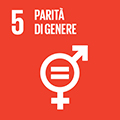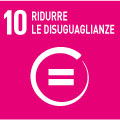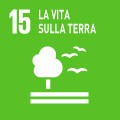- Docente: Serena Baiesi
- Crediti formativi: 9
- Lingua di insegnamento: Inglese
- Modalità didattica: Convenzionale - Lezioni in presenza
- Campus: Bologna
- Corso: Laurea in Lingue e letterature straniere (cod. 0979)
-
dal 10/02/2025 al 14/05/2025
Conoscenze e abilità da conseguire
Al termine del corso lo studente conosce in maniera soddisfacente le problematiche generali e singoli aspetti della storia della letteratura. E' in grado di comprendere e tradurre testi in lingua originale, ha acquisito le conoscenze teoriche di base necessarie per poter affrontare l'interpretazione critica dei loro contenuti ed è in grado di commentare e esporre testi secondo metodologie specifiche per l'analisi del testo letterario.
Contenuti
The Gothic in Literature from Romanticism to the Nineteenth Century
On Christmas Day, 1764 Horace Walpole published The Castle of Otranto, the very first Gothic romance.The Gothic then flourished especially in the nineteenth century, creating a whole vocabulary of new creatures and landscapes and two of the great novel of the genre: Frankenstein and Dracula. This course concentrates on the great works of Gothic literature in several genres: romance, novel, poetry, and short-story, which are central to an understanding of literature from the eighteenth to the nineteenth century.
Using a selection of texts and employing a variety of critical approaches from the historical, feminist and queer theories, to the ecogothic and the role of science in literature, we will explore the multifarious levels of meaning in Gothic texts as well as looking at narrative strategies and a variety of themes including the political and revolutionary, the erotic and the exotic, the Promethian and the undead, the role of women.
The reading list includes works by H. Walpole, A. Radcliffe, S.T. Coleridge, J. Austen, J. Keats, M. Shelley, J. Polidori, R.L. Stevenson and B. Stoker as key texts of the Gothic genre in order to examine the ways in which the genre has developed from its origin to the ninteenth century.
The course includes an introductory parts dedicated to the history of English literature from the Eighteenth century, the Romantic to the Victorian Period.
Testi/Bibliografia
Gli estratti dei testi in programma unitamente ad altri estratti letti e commentati durante le lezioni saranno messi a disposizione degli studenti nello spazio on-line "Virtuale"
Primary texts:
- H. Walpole, The Castle of Otranto (selection);
- A. Radcliffe, The Romance of the Forest; The Mysteries of Udolpho (selections);
- M.G. Lewis, The Monk (selections);
- J. Austen, Northanger Abbey (full novel);
- S.T. Coleridge, "The Rime of the Ancient Mariner"; "Christabel" (selections);
- Mary Shelley, Frankenstein (selection);
- J. Keats "La Belle Dame Sans Mercie", Lamia (selection);
- Short story: 1 a scelta: J. Polidori, “The Vampire”; R. L. Stevenson, “Olalla”; J.S. LeFanu, “Carmilla"; C. Dickens "The Black Veil".
- B. Stoker, Dracula (full novel)
Secondary reading:
History of English Literature:
L. M. Crisafulli e K. Elam (a cura di), Manuale di letteratura e cultura inglese, Bologna, BUP, 2009.
English Editions:
- English Literature in Contex, ed. P. Poplawski (Cambridge UP 2008) Ch. 3 "Restoration and eighteenth Century"; Ch. 4 "The Romantic Period"; Ch. 5 "The Victorian Age".
- The Norton Anthology of English Literature, vol. II or The Oxford Anthology (sala consultazione - Biblioteca LLSM)
- The Broadview Anthology of British Literature, "The Age of Romanticism", second ed., Broadview Press 2010.
- The Cambridge History of English Literature, ed. J. Chandler, Cambridge UP 2009.
Saggi critici:
Tre capitoli (4 per non frequentanti) tratti a scelta dai seguenti volumi:
- Maurizio Ascari; Serena Baiesi; David Levente Palatinus (eds.), Gothic Metamorphoses across the Centuries: Contexts, Legacies, Media. Peter Lang: 2020.
- Angela Wright and Dale Townshed (eds.), Romantic Gothic. An Edinburgh Companion, Edinburgh: Edinburgh University Press, 2016;
- Groom, Nick (2012) The Gothic: A Very Short Introduction, Oxford & London, Oxford University Press.
- Hogle, Jerrold E., ed. The Cambridge Companion to Gothic Fiction. Cambridge: Cambridge University Press, 2002.
- Punter, David, ed. A New Companion to the Gothic. Oxford and Malden, MA: Blackwell, 2012.
- Punter, David. The Literature of Terror: A History of Gothic Fictions from 1765 to the Present Day. Vol. 1 The Gothic Tradition.London and New York: Longman, 1996.
- Botting, Fred (2013) Gothic, 2nd edition, London, Routledge.
- Stevens, David (2000), The Gothic Tradition (Cambridge Contexts in Literature).
- D. Heiland, Gothic & Gender : An Introduction, Oxford, Blackwell, 2004, (Biblioteca del DLLSM)
- Auerbach, Nina. Our Vampires, Ourselves, University of Chicago Press, 1997.
- Spooner, Catherine and Emma McEvoy, eds. The Routledge Companion to Gothic. London and New York: Routledge, 2007.
- Jane Goodall, Christa Knellwolf (eds.), Frankenstein's Science Experimentation and Discovery in Romantic Culture, 1780–1830, Routledge, 2008.
- William Hughes, David Punter and Andrew Smith (eds.), The Blackwell Encyclopedia of the Gothic, Vol. II, Oxford: Blackwell-Wiley, 2013.
- Janet Todd, "Northanger Abbey" in The Cambridge Introduction to Jane Austen, Cambridge: Cambridge UP, 2012.
Metodi didattici
Lezioni frontali in presenza; lettura e commento dei testi in lingua originale; utilizzo di supporti informatici; visione e commento di adattamenti cinematografici dei romanzi presenti in programma.
Modalità di verifica e valutazione dell'apprendimento
L'esame finale è scritto in lingua inglese per tutte le sessioni d'esame per studenti e studentesse frequentanti e non frequentanti.
La prova è composta da due parti: una prima parte della prova, da svolgergi in 40 minuti, sarà composta da domande con risposta breve e multiple choice riguardanti la storia letteraria e il contesto culturale dal Settecento all'Ottocento; la seconda parte, della durata di 1 ora, includerà domande aperte riguardanti gli autori e le autrici e i testi trattati durante il corso con anche commento di estratti.
Strumenti a supporto della didattica
Lezioni frontali con supporto informatico e audio-visivo (proiezione di file con power point) e proiezione di filmati e adattamenti cinematografici in lingua originale.
Orario di ricevimento
Consulta il sito web di Serena Baiesi
SDGs




L'insegnamento contribuisce al perseguimento degli Obiettivi di Sviluppo Sostenibile dell'Agenda 2030 dell'ONU.
